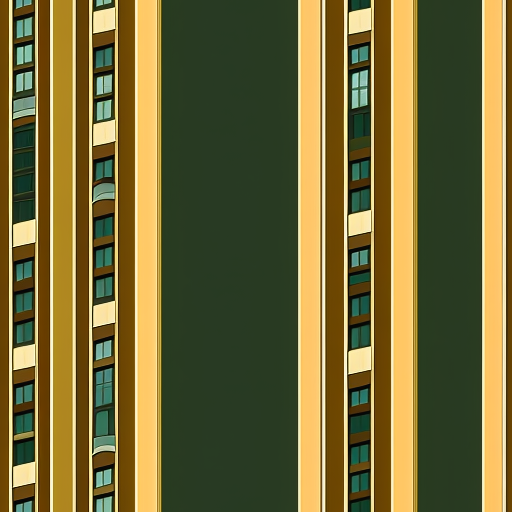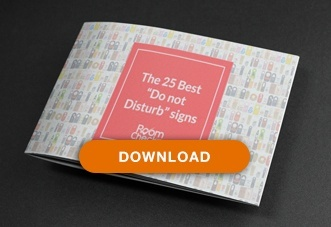
Attendants always know. They are the pumping heart of a hotel.
Not the General Managers, not the owners. Attendants.
They master the ancient ability to move between rooms, restaurants, meeting rooms, hallways, offices and laundries without being seen. A good attendant is like a urban myth: you sometimes hear a story of someone that actually met one but he’s always a friend of a friend of a friend.
They’re silent ninjas with a thing for cleaning other people’s mess.
So the worst thing that can happen to them is to break this cycle of invisibility. That’s like the ultimate capital sin of the profession. An attendant can be found napping exhausted by the laundry machine and it would not be a big deal. But if they open a room door while a guest is in it, well… that’s another story.
Sure, softwares help and etiquette says that a good attendant should always knock three times before opening a room door (even though that room is under renovation since 2003), but even the most experienced attendant can accidentally open an occupied room door and this is never good news.Hang-overing on a hotel bed is not the best image anyone wants to leave to the world, so when somebody violates the sanctity of a guest hotel room chances are that you will get a complaint or a pretty nasty review.
So how can you help your attendants to avoid this awful situations?
Get some “Do not disturb signs”. Oh, that simple?
Hmm, not really. Let me rephrase it: get some GREAT “do not disturb signs” and make sure your guests use them, as having them hanging out on the closet or on a drawer won’t do much good, will it?
What makes a good DNDS (Do Not Disturb Sign)?
A good sign needs encourage guests to put it up. So many time guests don’t put it up because they just can’t be bothered to go back to the door. So something fun and relevant might encourage them to do it.
A good sign should also clearly be showing if the room is occupied, some signs look the same when they’re occupied or ready to be cleaned. And we don’t want those elusive ninja attendants to not see it changed from occupied to free.

A good sign should also be in the spirit of the hotel and the guest, so formal hotels might want something really boring.
So, what would convince your guest to use a DNDS? Here are some suggestions. We’ve made a booklet of the best Do Not Disturb Signs which you can download here, there’s plenty more in there.
Suggestions for great Do Not Disturb Signs

What happens in Vegas stays in Vegas
Golden Gate Hotel & Casino plays the fun card, well it’s Vegas after all, isn’t it? So what better way to let the hotel staff know that you need sleep (and probably paracetamol and a lot of water) after the historical night you had?
Pros: it’s fun and just the right amount of kitsch
Cons: does not fly for hotels with mainly corporate / MICE clientele
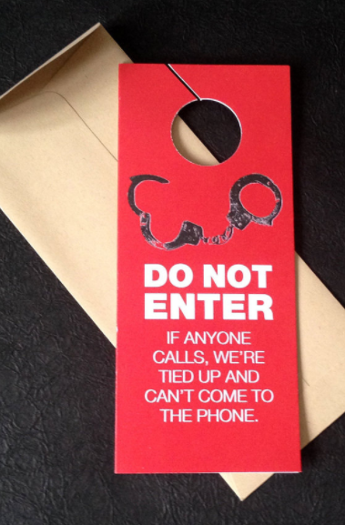
50 shades of DNDS
“Do not enter if anyone calls we're tied up and can't come to the phone”. Sexual suggestion on DNDS is always a safe road to take. If your DNDS is branded (and why shouldn’t it be?) chances are your guests will steal it after the stay and it will hang on some living room doorknob, giving your brand extra exposure.
Pros: Spicy and great for branding
Cons: If you’re not a romantic hotel or your average guest lacks of sense of humor, that could be a boomerang and they could be embarassed to use it
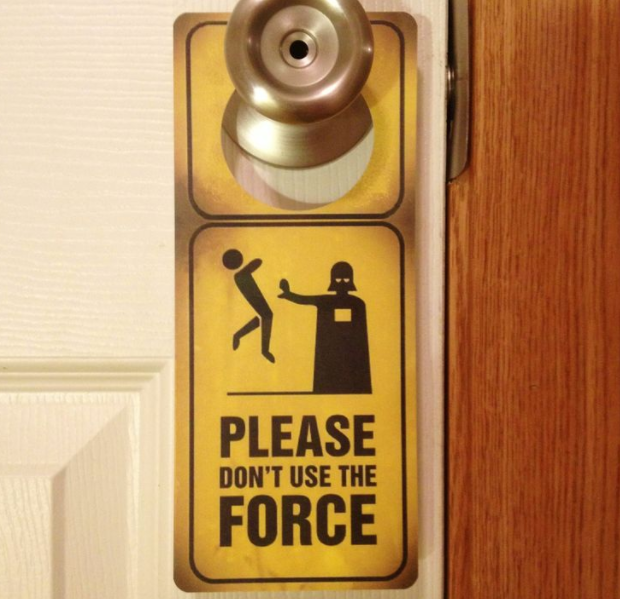
Geek is the new Jock
I know people that commit themselves to use at least a Star Wars quote every day in normal conversations. It’s true. Well, even if you’re not into that level of geekness, it’s undeniable that pop culture reshaped the way we look at things and, unless you’ve been living on the desert of Tatooine for the last 20 years (or because of it), you will probably get a nerdy reference.
Pros: Politically correct, at least for Planet Earth
Cons: Unless you are very conservative with your brand or your client demographic is above 80, I don’t see any
Minimal Design
“Isolationist, very isolationist, maybe too isolationist”. That was the review my trusted record dealer did for an ambient album back in the 90’s. Well, that applies to a lot of things around us. Minimalism hype is something we’ll probably never get over with. It may be its Zen-ish connotations or just that it doesn’t look cool to say that you actually like golden tapestry and baroque opulence. Fair enough, but sometimes being minimal for just the sake of it is, well, isolationist, very isolationist, maybe too isolationist.
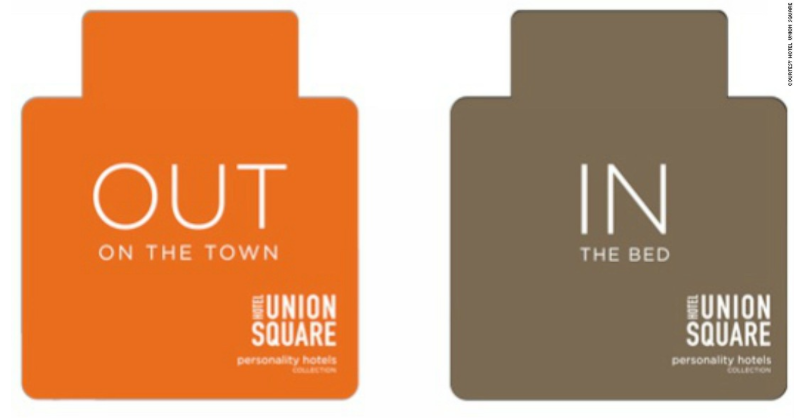
Pros: Looks cool and you can use the (lot) of empty space to brand it
Cons: It was out of style in 1997

Corporate
You are very proud of your brand. It spells r-e-s-p-e-c-t-a-b-i-l-i-t-y, so you don’t want to mess it up and listen to that crazy new creative marketing director you hired. Your DNDS will just be it: a DNDS. I get it. Well, look at the bright side: with this approach your brand respectability will stay intact. As will your DNDS, because they will never be put out of the closets.
Pros: Impossible to hurt anyone’s feeling. Suits every guest.
Cons: Zzzzzzzz, mh? What?
Takeaways
- Choose your DNDS style according to your brand identity and your average guest;
- If you’re unsure, take some calculated risks. Remember, it’s just a sign!
- Do not print millions of them. A/B test with some different approach, see how guest reacts (do they mention the signs on reviews? Do they steal them?) and find what better suits your (and their) needs;
- And most importantly, stop whatever you’re doing and bring a Latte Grande to your attendants right now. They do one of the hardest job in your hotel, one that hardly gets credit. And if you can’t find them anywhere, well, it just means they’re very good at what they do and you should be proud for them.
For more Inspiration on Great Do Not Disturb Signs, download our 25 Best Do Not Disturb Signs e-book.

